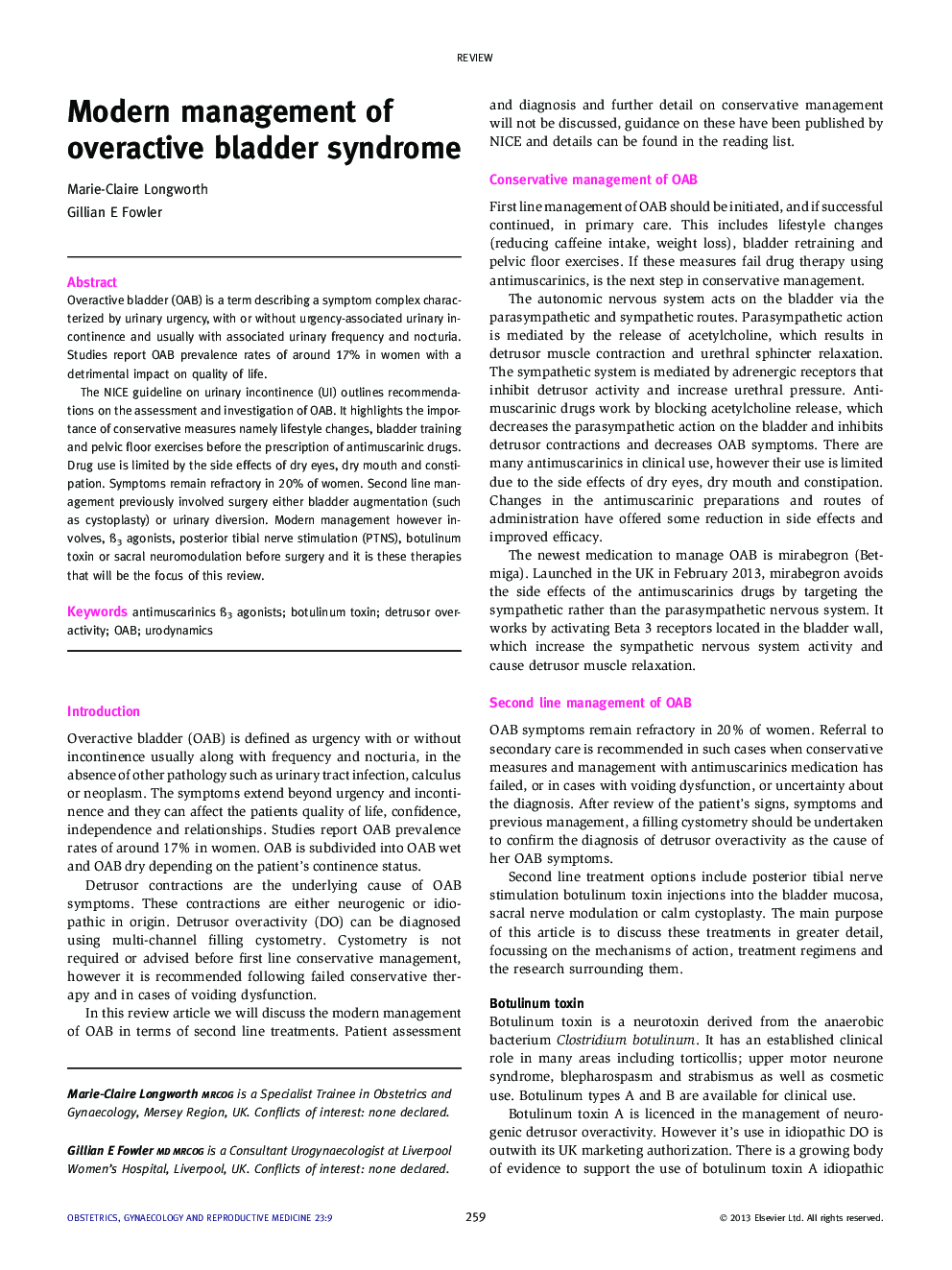| Article ID | Journal | Published Year | Pages | File Type |
|---|---|---|---|---|
| 3966724 | Obstetrics, Gynaecology & Reproductive Medicine | 2013 | 4 Pages |
Overactive bladder (OAB) is a term describing a symptom complex characterized by urinary urgency, with or without urgency-associated urinary incontinence and usually with associated urinary frequency and nocturia. Studies report OAB prevalence rates of around 17% in women with a detrimental impact on quality of life.The NICE guideline on urinary incontinence (UI) outlines recommendations on the assessment and investigation of OAB. It highlights the importance of conservative measures namely lifestyle changes, bladder training and pelvic floor exercises before the prescription of antimuscarinic drugs. Drug use is limited by the side effects of dry eyes, dry mouth and constipation. Symptoms remain refractory in 20% of women. Second line management previously involved surgery either bladder augmentation (such as cystoplasty) or urinary diversion. Modern management however involves, ß3 agonists, posterior tibial nerve stimulation (PTNS), botulinum toxin or sacral neuromodulation before surgery and it is these therapies that will be the focus of this review.
